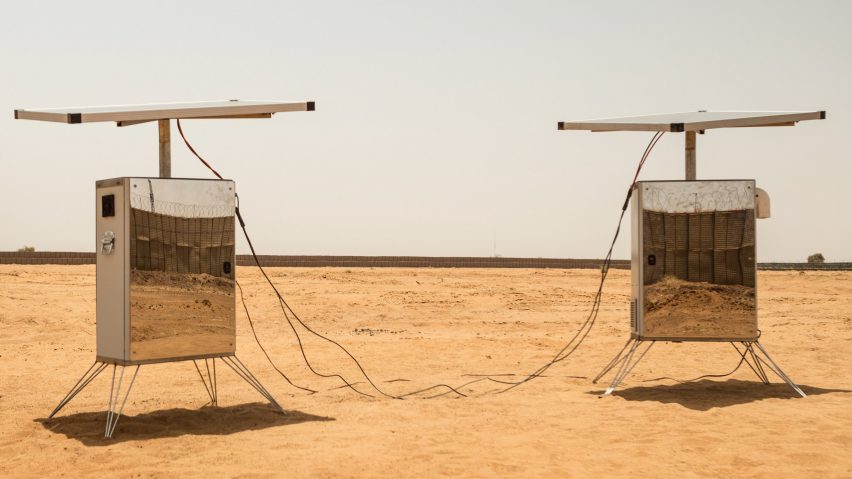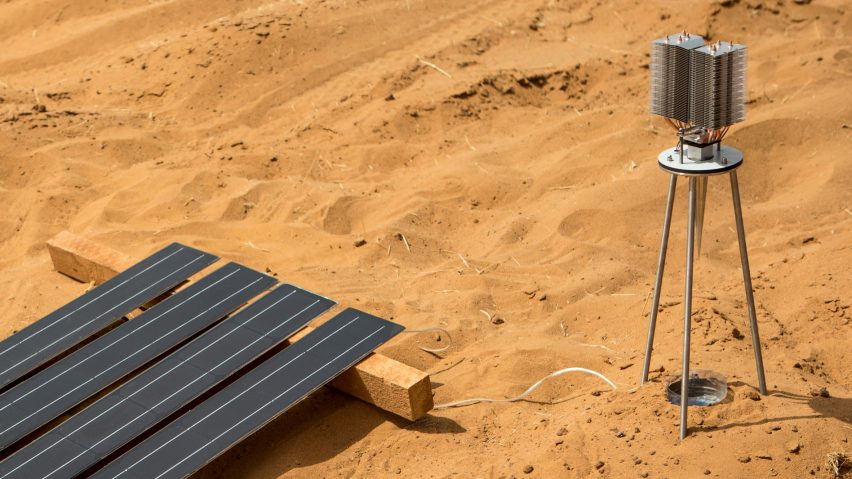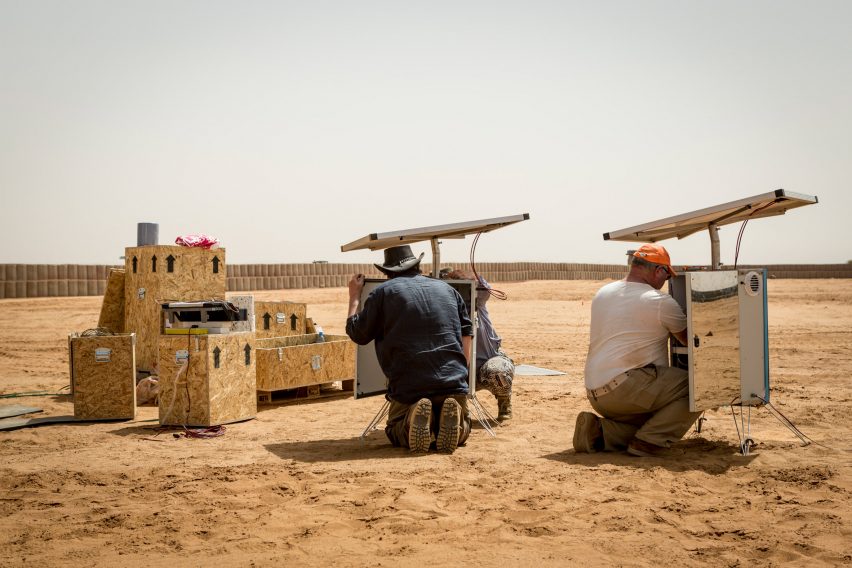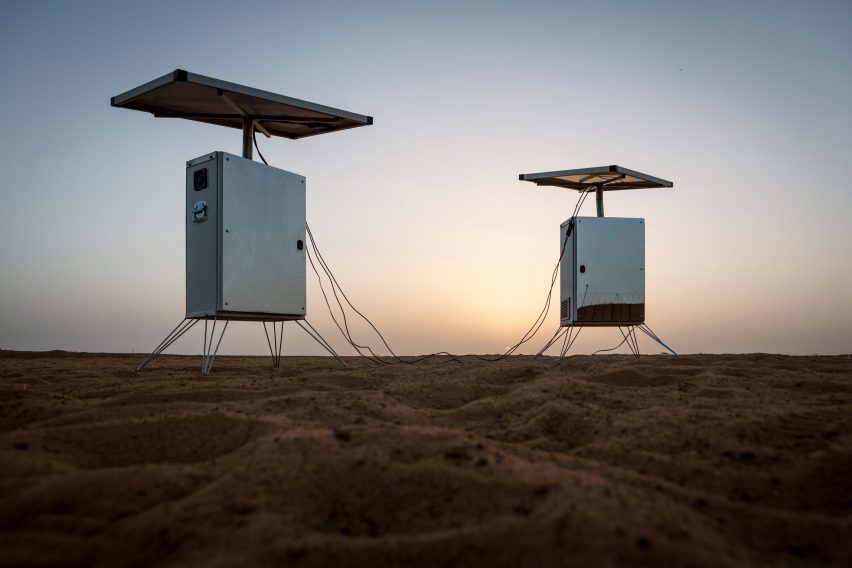
Sunglacier harnesses solar power to harvest water in Mali's Sahara Desert
Dutch company SunGlacier's off-grid Desert Twins harvester can collect water in the hottest and driest of environments.
The Desert Twins – which the company calls an artificial water well – rely on a process of condensation to create and collect water. The harvester comprises two separate devices – an energy unit, which draws and stores power from solar panels, and the water maker, which uses this energy to cool down a metal plate.

Once this temperature is low enough, humidity in the air condenses agains the metal, causing droplets to roll down. SunGlacier says the liquid that's harvested is similar to rainwater, and can be used for agriculture or cleaned for drinking.
"Air and sunshine are for free, so why not use these elements to harvest water in drought-affected places," said founder and artist Ap Verheggen, who set SunGlacier up in 2010 to create ways of helping areas suffering from water shortages.
"Hot deserts seem dry, but they still contain a lot of water in the air, up to five times more than in the Netherlands. It's mostly because of the high temperatures that it doesn't rain. The relative humidity is low, but the absolute humidity can be very high."

The device, which the company used during the hottest drought period of the year in Mali, is the latest of SunGlacier's efforts to design solar-powered water makers.
Although it was tested successfully in the Netherlands, the extreme environment of the Sahara Desert at first posed some difficulties, causing units to overheat and stop working, and water to evaporate within minutes of the harvester being opened.
Having experimented in this kind of challenging climate, SunGlacier now hopes to build more machines, and develop storage and water cleaning and enriching processes. It's also building further prototypes that require less energy, and that could eventually be produced on a large scale.

"The world population is exploding, which causes a huge stress on water," Verheggen said. "Harvesting atmospheric water is in my view an excellent addition."
"Using solar water for human consumption or agriculture is like borrowing this water. It's a short cycle, when the water is given back to nature."
Italian architect Arturo Vittori has also experimented with ways of harvesting water from the air, designing a wooden tower that similarly uses condensation to provide developing communities with drinking water.